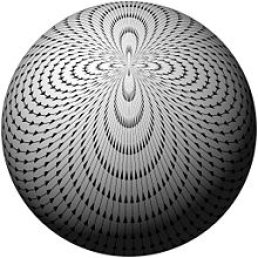K is for K-theory
The Author

Prof Ulrike Tillmann FRS ML
Professor of Mathematics
Professorial Fellow of Merton College
Ulrike Tillmann has worked in the field of Algebraic Topology including $K$-theory and Topological Quantum Field Theory. Among other honours, she has received the Whitehead Prize and Bessel Prize for her work on moduli spaces of Riemann surfaces and classifying spaces of cobordism categories.
Find out more
This Plus article describes some of the work of John Milnor, on $K$-theory and other branches of mathematics, for which he received the Abel Prize in 2011.
The Plus article The shape of things to come introduces the Bloch-Kato Conjecture, linking algebraic $K$-theory with other areas of mathematics.
Michael Atiyah wrote a commentary about his papers on $K$-theory.

K is for K-theory
$K$-theory is a relatively new mathematical term. Its origins in the late 1950s go back to Alexander Grothendieck. He used the letter 'K' for 'Klasse', which means 'class' in German, his mother tongue, as the letter 'C' was already used elsewhere, for example for function spaces. Grothendieck worked in algebraic geometry, an area in which ideas from algebra and geometry combine to lead to deeper understanding of both. Today there are really several $K$-theories. The most commonly known is probably the $K$-theory of topological spaces, which was introduced by Michael Atiyah and Friedrich Hirzebruch. This is a very powerful notion closely related to homology. Early successes of topological $K$-theory include Adams' solution to the vector fields on spheres problems (1962) and Atiyah and Singer's Index Theorem (1963). More recently, a twisted version has played an important role in the study of string theory.
Back to Grothendieck, who was one of the great mathematical visionaries of the 20th century. He liked to think very generally, seeking a common framework that could encapsulate many particular examples. A category is a very general type of mathematical concept where the objects of interest are studied together with a specified family of maps between them. One basic example has finite sets and maps between them. Another example is that of finite dimensional complex spaces, with linear maps between them.
Within a category, some objects can be essentially the same, even though they look rather different. Such objects are called isomorphic. For example, the Euclidean space $\mathbb{C}^n$ is isomorphic to the vector space of all complex polynomials of degree less than $n$. Indeed, all complex vector spaces of the same dimension are isomorphic.
We can consider all objects that are essentially the same as each other as a single object of a new type, called an isomorphism class. The set of isomorphism classes of the objects in a category $\mathcal{C}$ is itself of interest. Sometimes the objects (and thus isomorphism classes) in the category can added. For example, two vector spaces can be added to form their direct sum. In such a case, Grothendieck proposed to study an associated group, called $K(\mathcal{C})$, constructed by allowing formally not only addition but also subtraction. Equally important was his insight not only to remember the isomorphism classes of objects, but also to keep track of how different isomorphic objects are identified. In the case of the category of finite sets, this comes to saying that one should not only count (all sets of size $n$ are isomorphic) but also remember how one counts (there are $n!$ different ways to count a set of size $n$). Remembering this additional structure leads to the higher $K$-theory groups. Together they capture deep information about the original category.
In topological $K$-theory, which starts with the category of families of finite dimensional vector spaces parametrized by a fixed topological space $X$, these higher invariants can be understood in terms of the lower $K$-theory groups by the celebrated Bott Periodicity Theorem. But this is not the case in algebraic $K$-theory. From the point of view of algebraic $K$-theory, topological $K$-theory of a space $X$ is the study of its functions $C(X)$. Thus it is natural to extend this to any ring $R$. This generalisation from the commutative rings of functions to more general rings is the key idea in non-commutative geometry, a branch of mathematics coined by Alain Connes. For a while, it was a difficult problem to find the right extension to yield higher invariants with good properties. This was finally solved by Dan Quillen (1973). Atiyah and Quillen both received Fields Medals for their work, and were members of the Oxford Mathematical Institute for many years.

There are deep connections between algebraic $K$-theory and number theory, as expressed in the related and now solved conjectures of Milnor, Quillen-Lichtenbaum, and Bloch-Kato. Waldhausen, motivated by the study of geometric objects called manifolds, extended the algebraic $K$-theory of rings to the much wider class of ring spectra. This is a very powerful theory and remains an active area of research for topologists and number theorists.




